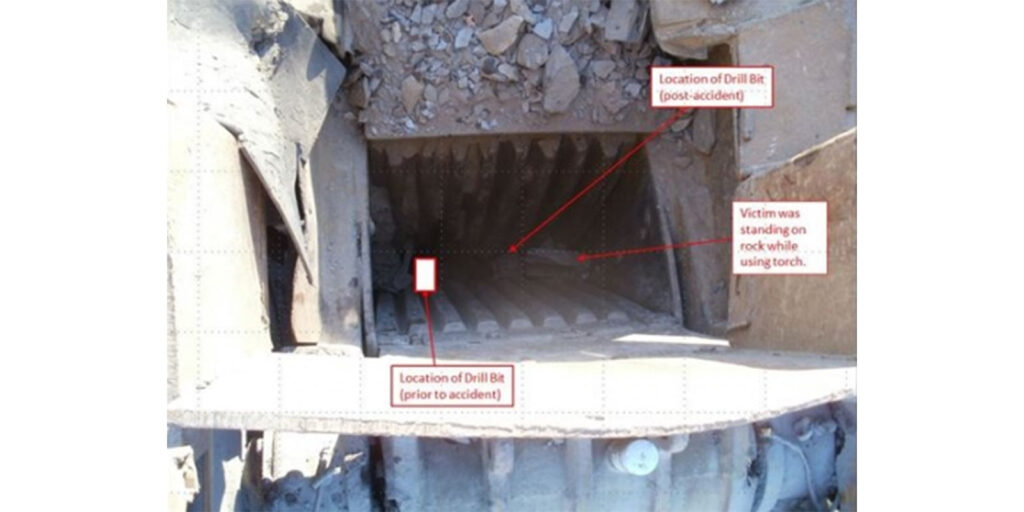Rock crushing isn’t a job for the faint of heart. Whether you are quarrying or ore processing, crushing is hard, fast-paced work that, if proper precautions aren’t taken, can be dangerous as well. While the jaw crusher has become increasingly safe in recent years, it is arguably one of the most dangerous pieces of equipment at the plant. Regardless of whether you are doing groundwork or actually operating a jaw crusher, it is essential you take the steps to keep you and the crew safe. These steps can be the difference between a mundane drive home after a hard day’s work and a trip to the hospital. Make sure you follow the provided precautions to make sure you have the former.
Common Injuries
Accidents around the use of a jaw crusher can be as simple as a sprained ankle or as monumental as a life-threatening incident. Here are a few common causes of injuries:
Slips, Trips, and Falls
We have all heard how essential it is to prevent slips, trips, and falls. Every safety-focused organization reinforces this concept to their employees on a daily basis. In the crushing industry, however, the ramifications of a fall can be far more severe. Jaw crushers often spill out rock while in operation. Not only does spillage cost producers efficiency but also creates tripping hazards for those working around the machine. When working around powerful and potentially dangerous equipment such as jaw crushers and other compression-type rock crushers, a twisted ankle may be the least of your worries.
Maintenance-Related Injuries
Even premium jaw crushers will need maintenance at some point. Some of the most severe injuries occur while fixing equipment and replacing parts. There is an inherit risk in fixing a jaw crusher, and that risk is compounded when proper procedures are not followed. The last thing you want during a routine procedure is for you or one of your employees to get hurt. This machinery commands your respect and focus must be maintained even during routine tasks such as changing jaw dies.
Projectile Rock
While most rock chips that fall out of the jaw crusher are harmless, some shards shoot out with enough force to really injure someone. Being at the end of a projectile rock shard can land you in the hospital.
Bridged Rock
Rocks frequently bridge the throat of the jaw crusher. When this happens, many companies will have some sort of equipment like a rock breaker to break or reposition the rock. The operations that do not, however, are not only risking a drop in production, but they’re also risking injury.
Jaw Crusher Safety features
As mentioned previously, jaw crushers have become safer in recent years. The hydraulic toggle plate was a big step towards improving the safety of operating a jaw crusher. Now, instead of requiring someone to jump in and replace the bent or broken toggle plate every time a tramp event happens, the hydraulic toggle plate has a release valve that can restore functionality when an unbreakable enters the jaw crusher.
There are a variety of safety products that are available to producers today. Identifying your needs for these products can be as simple as asking yourself, “Do we have the proper features and tools to perform routine tasks such as belt tension checks, jaw die changes, or wedge adjustments safely?” Sometimes the issues can be systematic, “Is my rock box designed for the rate of capacity we are operating? Is the nip angle for my jaw crusher aggressive enough to grab the stone to avoid excessive spillage?” Depending on your answers you may need to rethink your design or improve the offering of safety tools available at your plant.
Tips
The jaw crusher, like all stone processing machinery, can be a dangerous piece of equipment if used without care. So be sure to take the proper precautions and you will not only protect your team, but you will also increase production. Here are a couple tips to keep your team working safely:
Protect the Operator
The operator of the jaw crusher should always be protected. Depending on the type of crusher being used, this may mean wearing a face shield or being behind the glass. Whatever the method, ensure they are protected from projectile rock.
Follow Protocol
You hear it all the time, but following protocol is absolutely essential. The risk of slips, trips, and falls, for example, can be significantly reduced if chipped rock is cleaned up before and after each shift. It is the little things like this that can keep your team safe.
Turn it Off, Lock it Up, Tag it Out
If at all possible, always turn the jaw crusher and surrounding components off when performing maintenance. There are certain situations where it needs to remain on, but a majority of maintenance can be done with it off. Don’t risk an injury for a few more minutes of production time. It’s not worth it, and it’ll hurt your bottom line at the end of the day.
Keep Up-to-Date Equipment
The equipment you use is one of the most important parts in operating a jaw crusher safely. If you are using double-toggle jaws, for example, you may want to think of replacing your crusher with a newer and safer version. Double toggle jaws require much more maintenance and in-so-doing create more opportunities for unsafe situations. As a general rule of thumb, the more maintenance required, the more likely an accident will occur. However, if you are set on keeping your crusher, be sure to know that there are safety and performance upgrades at your disposal.
At the end of the day, every employee’s No. 1 priority is to make it home safe. Follow these tips and you will be on your way to an accident-free workplace. If you think you may need to replace your current jaw crusher for a newer and safer version, then take a look at a few models. Want some more information? Give us a call!

